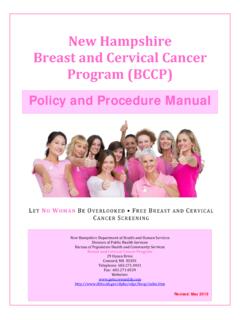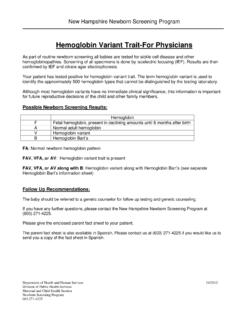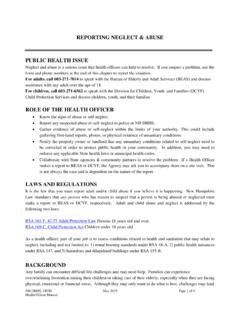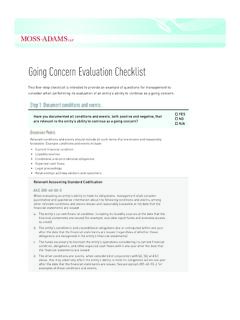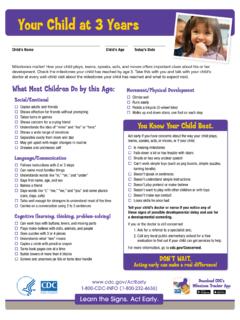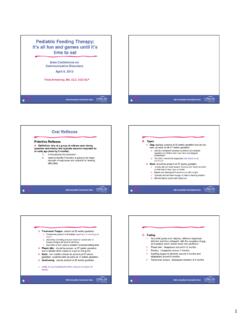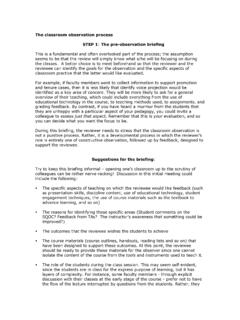Transcription of Section IV When you are finished with this section, you ...
1 Section IV When you are finished with this Section , you will be able to: Describe the principles of medication administration (p 2) Describe the principles of infection control: hand washing (p 3) Demonstrate the 5 steps to clean hands (p 4) List the Six Rights of medication administration (p 5) BDS Medication Administration Curriculum Section IV 2011 1 Principles of Medication Administration When you give medications, regardless of the type of medication, there are some basic principles that you will always follow. The basic principles that you will always follow are: Talk with the individual and explain what you are doing before you give medications. Answer any questions that the individual has. Help the individual to be as involved as possible in the process.
2 Provide privacy for the individual. Give medication administration your complete attention. o Give medications in a quiet area, free from distractions. o Never leave medications unattended, even for a moment! Wash your hands! You must wash your hands before giving medications and then again after you have given medication to each individual. Remember: if you have a question or a concern, you should always and call for help! BDS Medication Administration Curriculum Section IV 2011 2 Principles of Infection Control: Handwashing The single most important thing you can do to safeguard the health of others and yourself is wash your hands---and do it a lot! How many times per day do you and the individuals that you support need to wash your hands?
3 We all need to wash our hands: When we arrive at work After going to the bathroom Before, during and after meal preparation Before eating After blowing our nose, sneezing or coughing After providing personal care After gardening, housework Whenever hands are visibly dirty Before and after administering medications to an individual First thing in the morning and last thing at night Effective handwashing is proven to decrease spread of colds and flu and to reduce overall infection rates. Handwashing with soap and water is the most sensible way to make sure that your hands are clean You may also use an alcohol-based hand rub in place of soap and water. BDS Medication Administration Curriculum Section IV 2011 3 Source: When you are giving some types of medications, it is necessary to wear gloves.
4 Change your gloves as soon as you have finished administering medications to the individual. Never re-use gloves for more than one individual and always wash your hands again after you take off your gloves. Wearing gloves does not take away the need for handwashing: Always wash your hands as soon as you take your gloves off. And, only wear a pair of gloves to complete a specific task for a specific individual. Never wear the same pair of gloves for another task or with another Medication Administration Curriculum Section IV 2011 4 Six Rights Of Medication Administration The Six Rights When you are giving medication, regardless of the type of medication, you must always follow the six rights. Each time you administer a medication, you need to be sure to have the: 1.
5 Right individual 2. Right medication 3. Right dose 4. Right time 5. Right route 6. Right documentation Each time you give a medication, you must systematically and conscientiously check your procedure against these six rights. This is essential every time you administer any medication including medications that an individual has been taking for a long time. You must check for all six rights every time you administer any drug to any individual. Each time that you give a medication, you also need to remember to do the "Three Checks". This means that you are going to do a "triple-check" to make sure that the six rights are present each time that you give a medication.
6 You must: 1. Remove the medication from the locked area and check the prescription label against the medication log to make sure that they match: this is the 1st check. 2. Before pouring the medication, check the prescription label against the medication order to make sure that they match: this is the 2nd check. 3. After you pour the medication, but before you give it, check the prescription label against the medication log entry again to make sure that they match: this is the 3rd check. BDS Medication Administration Curriculum Section IV 2011 5 Right Individual In order to make sure that you are about to administer medications to the right individual, you have to know the individual. Even when you know the individual well, mistakes can happen.
7 Sometimes, when medications are being administered to more than one individual in a setting, or if you prepare medications for more than one individual at a time, you can be distracted and give the medications to the wrong individual. You can avoid a serious mistake if you: 1. Prepare medication for one individual at a time. 2. Give the medication to the individual as soon as you prepare it. 3. Do not talk to others and ask them not to talk to you when you are giving medication. 4. Do not stop to do something else in the middle of giving medications. 5. Pay close attention at all times when you are giving medications. You must also compare the individual's name on the prescription label, the medication order and the medication log. Make sure that they match.
8 If they do not match, or if there is any doubt about whether you are giving the medication to the right individual, !ASK QUESTIONS! If you make a mistake, follow your agency's policy for reporting medication errors. You may need to call the individual s physician, the Poison Control Center, and/or take the individual to the emergency room for evaluation. THIS IS WHY WE DO THE TRIPLE CHECK. BDS Medication Administration Curriculum Section IV 2011 6 Right Medication In order to be sure that you are giving the right medication, you must: Read the medication label carefully (remember that some medications have more than one name: a brand name and at least one generic name). Check the spelling of the medication carefully. If there is any doubt about whether the medication name is correct, stop and call the nurse or the pharmacist before you give the medication.
9 Read the medication order carefully. Make sure that the medication name on the order matches the medication name on the label. Read the medication log carefully. Make sure that the medication name on the label, the medication order and medication log match before giving the medication. Look at the medication. If there is anything different about the size, shape or color of the medication, call the pharmacist before you give it. It could be that you have been given a different generic brand of the medication. But sometimes when a medication looks different it means that you have the wrong medication. THIS IS WHY WE DO THE TRIPLE CHECK. Compare the medication name on the prescription label, the medication order and the medication log.
10 If they do not match, or if there is any doubt that you are giving the right medication, ! ASK QUESTIONS! If you make a mistake, follow your agency's policy or procedure for reporting medication errors. BDS Medication Administration Curriculum Section IV 2011 7 Right Dose The right dose is how much of the medication you are supposed to give the individual at one time. To determine the dose, you need to know the strength of each medication. In the case of liquid medications, you need to know the strength of the medication in each liquid measure. The dose equals the strength of the medication multiplied by the amount. Look at the sample label below. RX #:828291 Town Pharmacy 100 Main Street Pineville, MA 00000 (617) 000-0000 Jeff Smith 09/29/00 Valproic Acid 250mg ( Depakote) Take 2 tabs by mouth twice a day By Dr.





